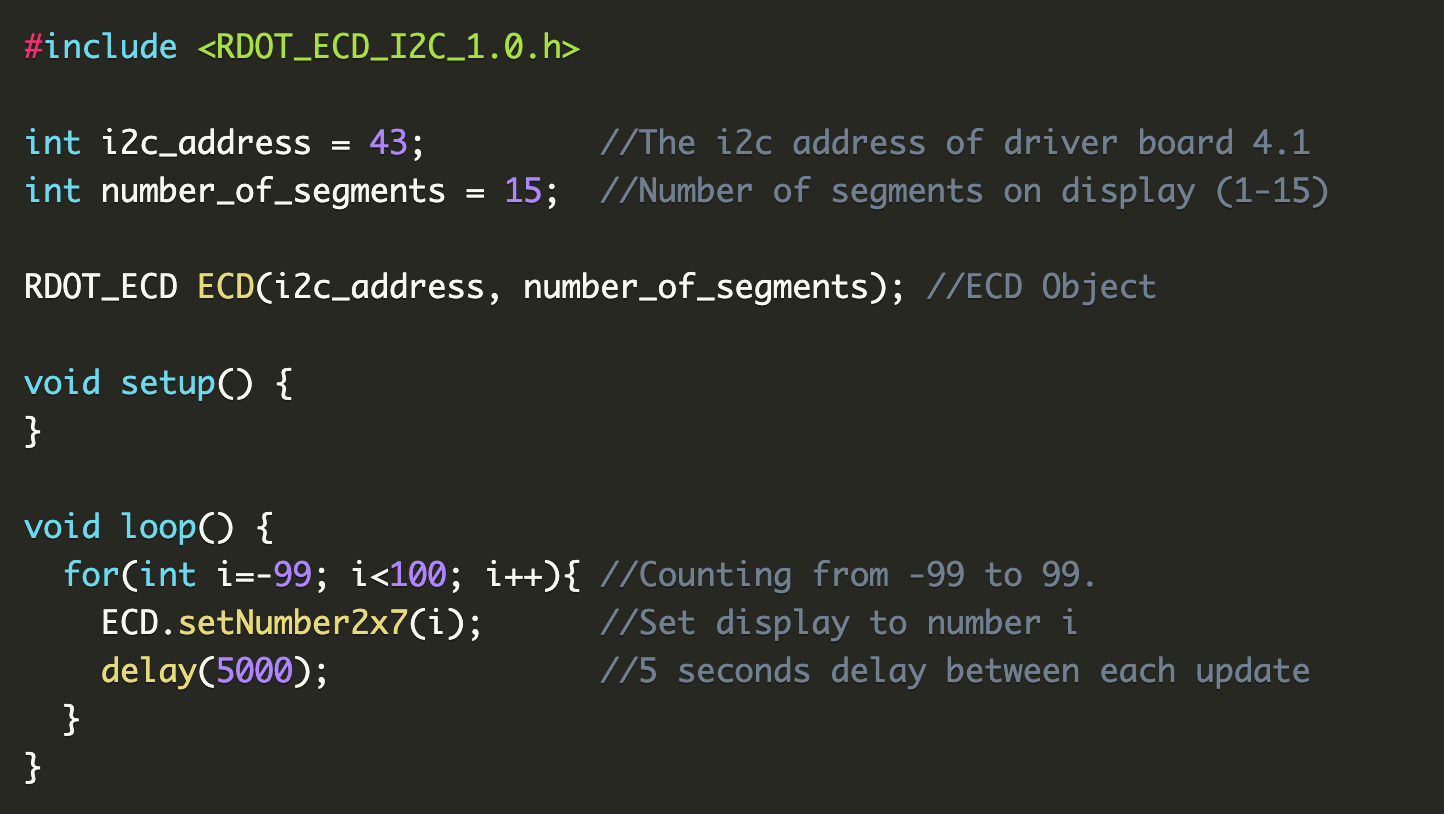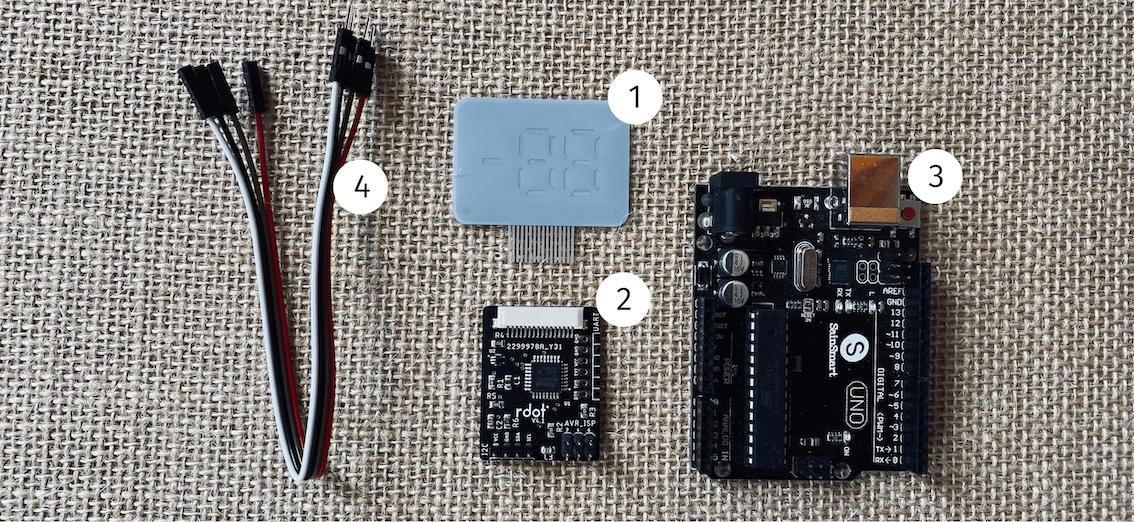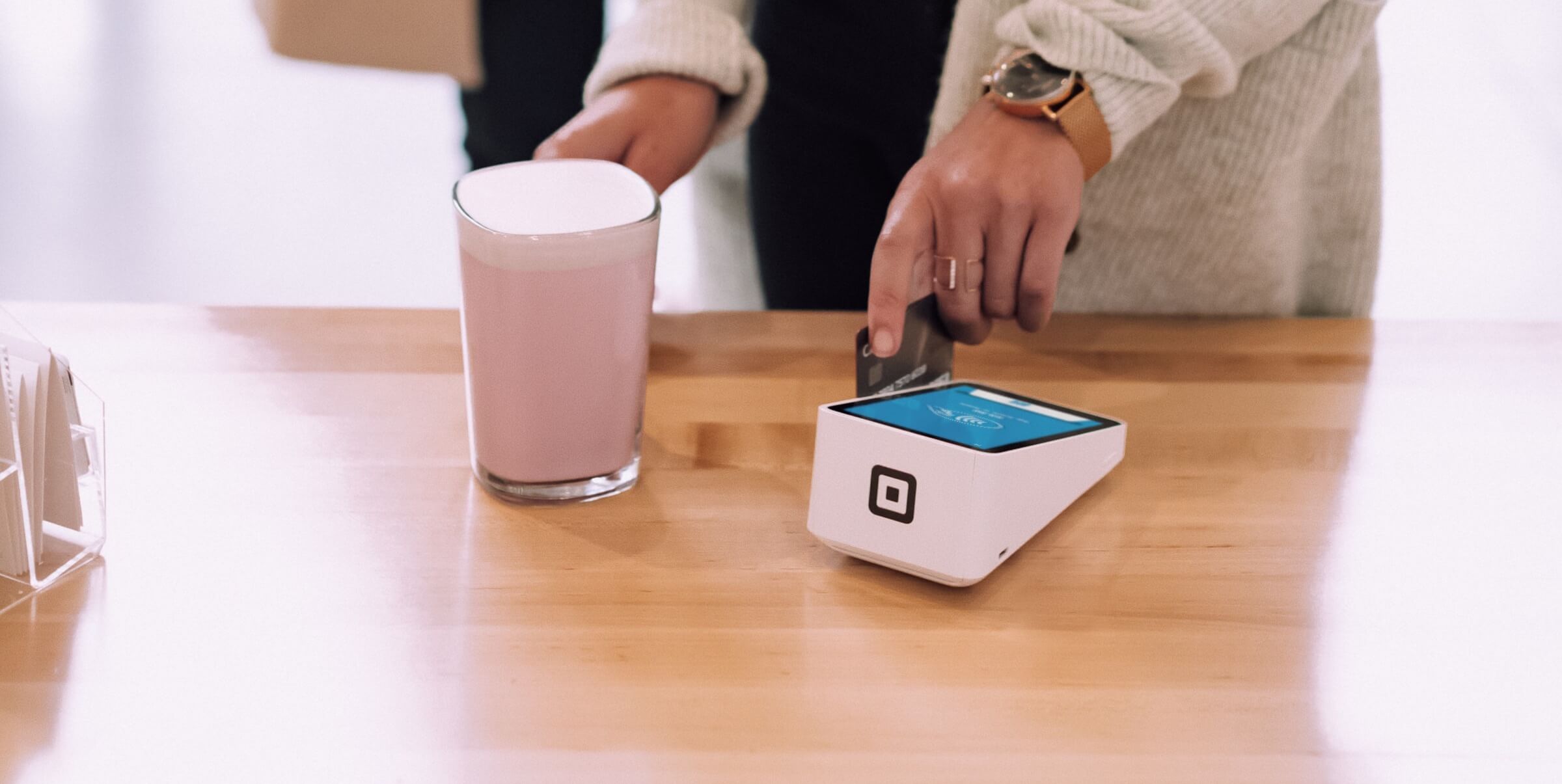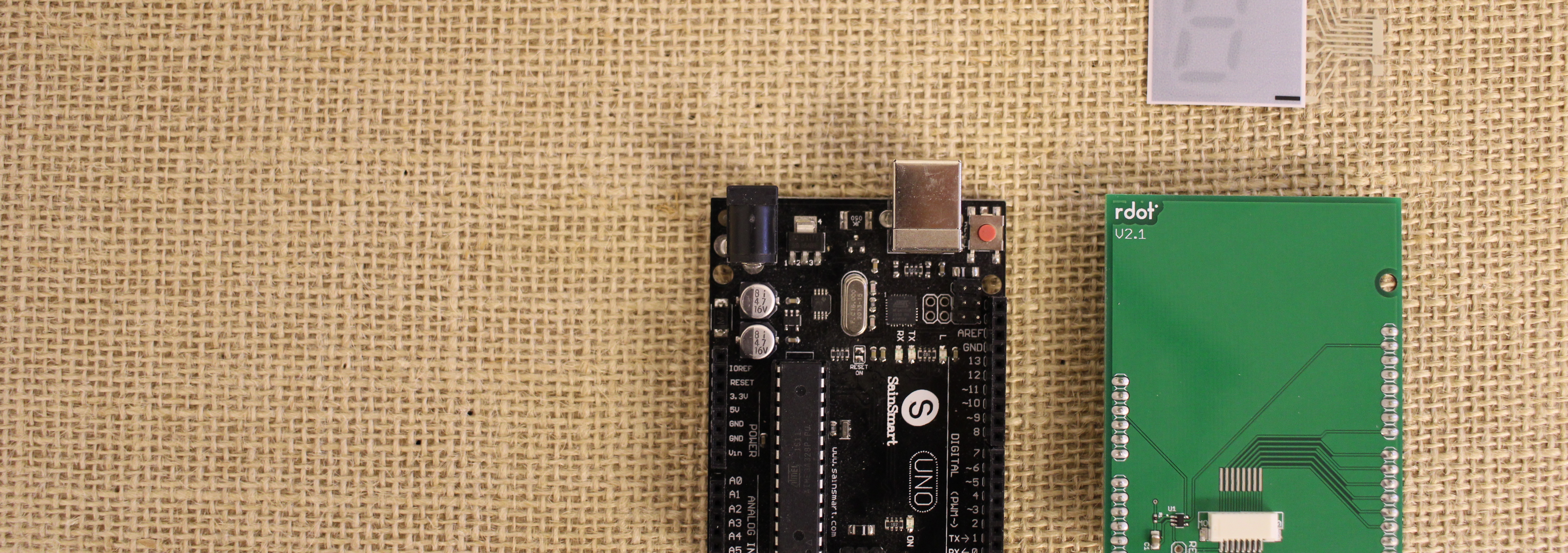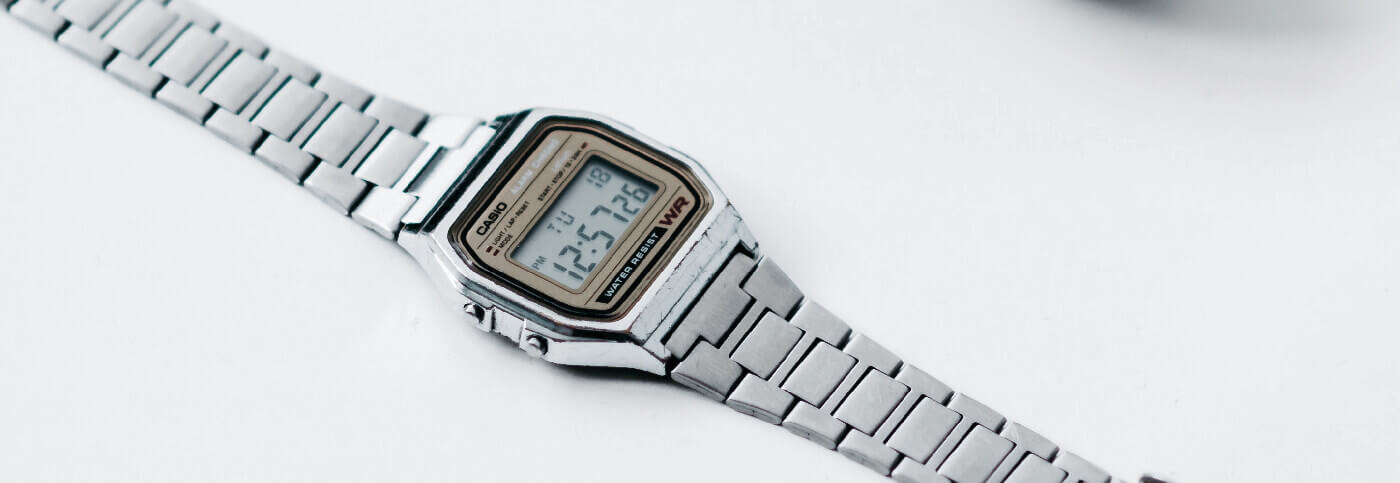
Finding and choosing the right seven segment display can be very difficult and time-consuming. There are several technologies out there, with vastly different specifications, advantages, and disadvantages. Reading this article, will provide you new insights on what seven segment displays that will suit your project or product.
This post aims to give you a better understanding of what different 7 segment display technologies are available on the market and how they can be applied in various use-cases. We will cover the following seven segment display options:
- LCD with backlight
- LCD without backlight (Reflective LCD)
- E Ink (EPD - Electrophoretic Display)
- Segment LED
- Rdot display (ECD - Electrochromic Display)
We will cover the following parameters:
For those of you that don’t have time to read the entire article, you can find a table summarizing the information below. You can also read the conclusions at the end of the article.
| Energy* | Cost ** | Flexibility | Optics | Viewing angle | Robustness | |
|---|---|---|---|---|---|---|
| LCD with backlight | 66 µW | Low $0.3-0.6/unit |
No | Poor appearance - clearly visible segments in OFF state. OK visibility in bright environments |
Poor | Good Wide temperature range, long lifetime. |
| LCD without backlight | 6.6 µW | Very low 0.2-0.4/unit) |
No | Poor appearance - clearly visible segments in OFF state. OK visibility in bright environments |
Poor | Good Wide temperature range, long lifetime. |
| E Ink | 4.6 µW |
High Difficult to get quotation for low volumes. |
Sometimes | Good appearance. Good in bright environments. Excellent black color. |
Excellent | Medium Does not perform well in extreme conditions |
| LED | >100 000 µW | Low $0.15-1.0/unit |
No | Good appearance if designed right. Low-cost versions typically have a poor appearance with clearly visible segments in the off state. Good for dark & indoor environment | Depends. Wider viewing angle requires brighter LED | Good Wide temperature range, long lifetime. |
| Rdot Display | 1.2 µW | Very Low $0.2-0.5/unit |
Yes | Very good appearance. Brighter display than reflective LCD. Sunlight readable and good for indoor environments | Excellent | Medium Requires encapsulation to perform well in extreme conditions |
* 2x2 cm^2 outer dimension of a 1x7 segment display, approximately equivalent to 1 cm2 active display area. The calculations are based on 100 display updates per day. The presented figures are the average energy consumption from multiple datasheets available online.
** 2x2 cm^2 outer dimension. 100 000 units
Overview
In this seven segment display comparison, we include both emissive displays and reflective displays. An emissive display versus a reflective display are significantly different when comparing factors such as energy consumption and optical performance. For instance, a reflective display cannot be used without ambient light, but an emissive display is close to impossible to read in direct sunlight. Additional factors that will be covered in this article include cost, form factor, electrical driving, connector options.
Energy Consumption
If you’re looking for an ultra-low-powered display technology, a segmented LED display is ruled out, and most likely, so is a backlit LCD display. What you need is a reflective display. This leaves us with three choices; reflective LCD, the E Ink display, and the Rdot display.
Reflective LCDs are less complex in terms of energy consumption. Our research indicates that the average power consumption for one square centimeter active display area will consume around 6.6 µW. This figure will not be significantly affected depending on the number of display updates you perform.
The E Ink display is close to fully bistable, which means that it will not consume any energy for static images. Close to all energy is consumed when the display content is changed. One display update is usually around 4mW during 1 second per 1 square centimeter. With 100 number changes per day, the total power consumption is approximately 4.6 µW/cm2.
The Rdot display has similar bistability characteristics as E Ink, but the screen will not retain the image as long as an E Ink display. The image retention time can be anywhere from 0 minutes up to 24 hours, depending on the use-case. For this example, we use a display with 15 minutes of image retention time. At 100 display updates per day, the Rdot display will consume around 1.2µW/cm2. One noteworthy feature to remember is that if the display is no longer powered, the current number on the seven segment display will naturally fade out during the next hour or so - you don’t have to actively turn it off.
For more detailed information, please read this article about power consumption.
Display Cost
The cost per unit will always influence the decision regarding which seven segment display technology to use. Before writing this article, a lot of work went into requesting offers from manufacturers worldwide to generate an average cost for all identified display technologies. The vast number of available variations, such as different types of liquid crystals, different connector types, different LED options, etc., makes it nearly impossible to end up at one generalized and representative number. For small one-digit seven segment displays in approximately 100 000 units per year, we are however able to draw the following conclusions:
- Reflective LCD and the Rdot display are among the cheapest technologies
- Backlit LCD and LED are around 50% to 100% more expensive than reflective LCD and the Rdot display
- E Ink displays are around 10x more expensive than reflective LCD and the Rdot display
Please contact sales@rdotdisplays.com to request a quotation for your seven segment display project.
Flexibility
The Rdot display is the only seven segment display that is bendable. The screen choice will therefore become very easy if your project requires a flexible display. The Rdot display is printed on a transparent plastic substrate that is bendable. The bend radius can be optimized to match your requirements simply through choosing the right thickness of the plastic substrate on which the display stack is printed upon.
Optical Performance, Visual Appearance, and Angle Dependency
Our preferred approach to evaluate the optical performance of various seven segment display types is to request samples from the producers. Seeing is believing. The very standard LCD and LED technologies will be easily accessible through multiple vendors. E Ink and Rdot have evaluation kits for sale.
My personal opinion is that the visual appearance of backlit and reflective LCDs, as well as segment LED displays, is not that appealing. One particular factor is that the segments in the unpowered state are still very visible in relation to the background. Another parameter is the viewing angle dependency. Most low-cost LCDs and LEDs are far from being perfectly non-angle dependent. Some are even impossible to read if you observe from only a 30° angle or more.
Both E Ink and the Rdot displays have close to no viewing angle dependency. E Ink has also managed to create very good black in the dark state, but still only 40% white reflection in the bright state which makes it fairly dark in poor light. The seven segment displays from Rdot will fade into the background color perfectly with accurate driving, which makes the Rdot display together with the E Ink display more visually appealing than the other options.
Robustness
A robust display solution that can reliably work at least throughout the entire product lifetime is apparently a critical factor. From our perspective, the robustness can be broken down into three subparameters; lifetime, operating conditions, and ruggedness. We all know that seven segment displays have been around for a long time. Segment LCDs and LEDs are very mature and optimized. Typical operating conditions range from at least -40 °C to +85 °C, and the display lifetime will exceed almost all expected product lifetimes. Put simply, they are extremely robust. However, they do have one problem. They are fabricated on glass, meaning that they can crack or shatter. The typical solution to make them more rugged is through making the substrates thicker and also to add other safety measures in the display-device integration. This is the reason why there’s often a significant distance from the surface of the device to the display.
The Rdot display is fabricated on a flexible substrate that will not crack or shatter. E Ink also offers some flexible displays with similar properties. Both E Ink and Rdot will not yet compete on robustness in all environments. The operating temperature range spans from 0 °C to 50 °C for the majority of E Ink films, while the Rdot can guarantee -5 °C to 40 °C to this date. Lifetime is also slightly limited for the two seven segment technologies. The lifetime will depend on the number of display updates that are performed. E Ink suppliers communicate a lifetime number ranging from 1 million up to 10 million display updates. The Rdot display has a lifetime that is currently below 1 million updates.
Which 7 segment display should I use?
As you may have realized by now, the answer to this question is not trivial. A few scenarios are presented below to answer as accurately as possible:
I need a seven segment display that is curved or flexible
The rdot display is the only viable option.
I want a display with as low power as possible
It really depends on the number of expected display updates throughout the display lifetime (read a more detailed explanation here).
Different seven segment displays are the preferred choice for different switching frequencies:
- high-frequency switching (i.e. > 600 times per day): reflective TN-LCD
- medium-frequency switching, (i.e. 8-600 times/day): Rdot display
- low-frequency switching (i.e. < 8 times/day): E Ink display
I need a seven segment display that is very low powered and will operate in a dark environment
Check out backlit segment LCD display. They consume significantly less power in comparison with other emissive technologies, such as segment LED.
My device will only be used a few times before it is disposed or recycled
The rdot display is most likely the best choice. It is very low cost, ultra low powered, and very environmentally friendly since it utilizes resource-efficient screen printing production and can be constructed with only organic materials.
